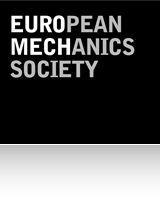537 – Multi-scale Computational Homogenization of heterogeneous structures and materials
Date:
26 March 2012 – 28 March 2012
Location:
Université Paris-Est, Marne-la-Vallée, France
Chairperson:
Prof. Julien Yvonnet
Laboratoire Modélisation et Simulation Multi Echelle (UMR CNRS 8208)
5 Bd Descartes
77454 Marne-la-Vallée cedex 2
France
phone : +33 1 60 95 77 95
fax : + 33 1 60 95 77 99
email : julien.yvonnet@univ-paris-est.fr
Co-chairperson
Dr. Marc Geers
Eindhoven University of Technology
email : m.g.d.geers@tue.nl
Dr. Frederic Feyel
ONERA Office National d'Etudes et de Recherches en Aérospatial
email : frederic.feyel@onera.fr
In recent years considerable progress had been made in bridging the mechanics of materials to other disciplines, e.g. downscaling to the field of materials science or upscaling to the field of structural engineering. The steady progress essentially results from the research efforts invested in multi-scale modelling in general, whereby a focus on multi-disciplinary aspects naturally arises. This colloquium addresses a dedicated technique, i.e. computational homogenization, which is probably one of the most accurate techniques in upscaling the nonlinear behaviour of a well-characterized microstructure. This method is essentially based on the construction of a micro-scale boundary value problem, which is used to determine the local governing behaviour at the macro scale.
The main added value of computational homogenization consists in surpassing limitations of analytical approaches, e.g. in the case of realistic multi-phase morphologies or complex nonlinear material behavior. Departing from the consolidated progress achieved in the past decade, many challenges have emerged, like:
- Direct coupling for materials whose physical geometry is provided by high resolution 3D imagery;
- Heterogeneous, time-dependent and non linear problems, including material dynamics;
- Heterogeneous materials with coupled multi-physics behavior (phase change, chemo-mechanics, nonlinear thermo-mechanics...);
- Multiscale damage modeling, capturing the transition from homogenization to localization;
- Computational homogenization including size and second-order effects;
- Multiscale simulations with non-local phenomena like cracks, instabilities or shear bands;
- Extension of computational homogenization schemes to multi-physics problems
- Reduction of computational costs associated with multiscale algorithms;
- Integration of phenomena occurring at the nanoscale
- Stochastic microscopic models
This colloquium is intended to stimulate and initiate interactions between researchers active in this field of science, in order to provide hints and new routes to tackle the aforementioned open problems.
